Dino Danelli, the much-loved drummer of the Rascals, passed away on Dec. 15, 2022, at age 78. Considered by many to be one of rock’s greatest all-time drummers, he powered the soul-rockers from the start in the mid-’60s. When The Rascals reunited for a handful of shows in 2012, Danelli, born July 23, 1944, spoke with West Coast journalist Harvey Kubernik about his time with the band. All of the words below are Dino’s own.
***
Our songs are still on the radio, soundtracks and movies. I can’t explain the magic of the music but there was a chord that struck and connected our music with people. the common person. It’s gone through an American kind of feeling. Our music is very joyous. No heavy angst or anything. It’s all very positive and you leave the show really feeling better than you did when you came in, ’cause that’s what we do. When we played live, I always looked at myself as a frontman behind the drums. Playing with Lionel Hampton and New Orleans dance bands helped establish my style, which was kind of different from everybody’s else. And it was just very helpful in making us unique. I just perform like I’m the lead singer.
I am playing in a band where the Hammond B-3 is a principal instrument. Joey Dee and the Starliters did that and a few isolated jazz players brought the Hammond B-3: Jimmy Smith, Jimmy McGriff. Joey Dee’s band was a big influence on the Rascals.
I remember the first time I heard “I Ain’t Gonna Eat Out My Heart Anymore.” There was no demo. We met the girls who wrote it in the Atlantic [Records] Studio A. At that point nobody was writing tunes. We were doing all covers. Ahmet [Ertegun, Atlantic chief] had seen us and he knew “Good Lovin’” was gonna be a smash hit. We did do it differently than [R&B artists] the Olympics. It was a whole different trip when he heard us do it and saw the response whenever we played that song. The dance floor got crowded in three seconds and it was full with people going crazy. But Ahmet didn’t want to release it first. Interesting. He was a very smart guy.
So he got the girls to come in and knew them. They were writing for some Motown things and they came in with this song and explained it to us, you know, how it wasn’t a normal song, you know, a talk song, and sung on the choruses; it was a melody but it was very different. We kind of got lucky with it and went to number 50, I believe, on the charts. But it established us as a real good performing and playing band. And it really spread out all over the country that we were one of the most visually exciting bands that was coming around in rock and roll in those days. And then Ahmet knew he had a song in his back pocket and put it out and overnight “Good Lovin’” shot right up and put us on the map.
In the Rascals everyone left me alone and luckily enough I came up with different things that always fit and always enhanced. I was always conscious of working with singers and always wanted to embellish what they were doing. To hear their interpretation and try and just make it better, and not try and fight for anything. But always come at it from a different angle.
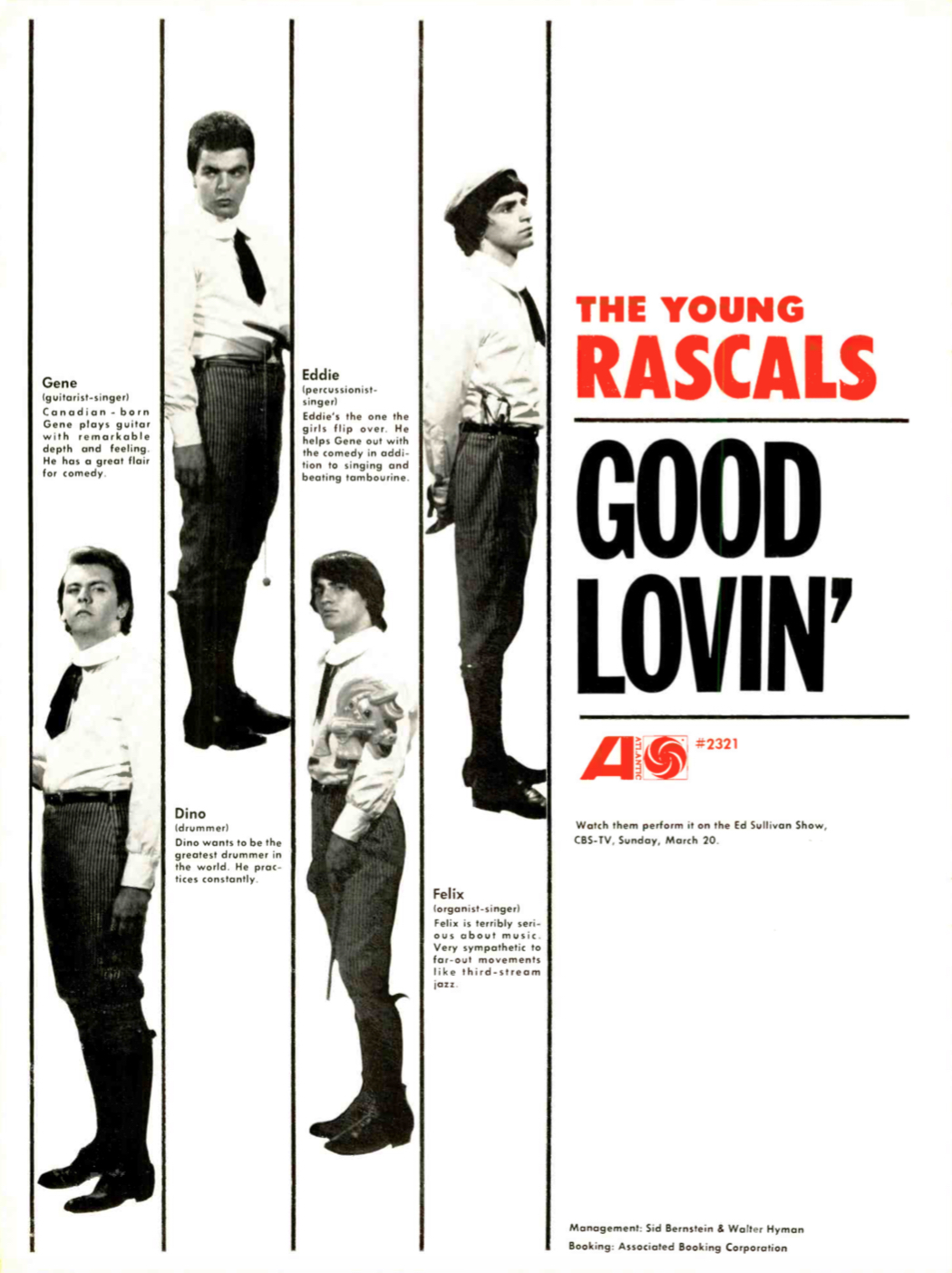
This ad for the Young Rascals single appeared in the March 19, 1966, issue of Record World
In those days, forget about technology. It was really primitive. But [producer] Tommy Dowd was a great musician, a great pianist, had great ears, as did [producer] Arif [Mardin]. And they were very smart to let our mistakes be left in. If we ever did anything that was so raw and powerful but it was sloppy, they didn’t care. They went for the heart of it. That was really smart on their end.
Like on “You Better Run.” I remember the whole way that happened and became a shuffle on the chorus was because of a mistake that I made. I slipped off the pedal and you hear that thing in the beginning of the record. That was a foot falling off the pedal. That’s how that came in. Tommy heard it and said, “What happened?” And I said, “I’m sorry. Let’s do that again.” “No! That sounded great, Dino.” So I kept doing that and it became part in the record. And then when it came to the chorus, I just felt like going into this shuffle kind of rhythm. Felix [Cavaliere, organist/singer] wrote it in a straight march tempo. And I just changed it and everybody jumped all over it. Felix came right in on top of me and Gene [Cornish, guitarist] and it just went there. Tommy kicked it off and just said, “Go for it. Don’t worry about making mistakes.”
We were raw and very passionate about our individual musicianship. And we were all excellent. I’m not hesitant about saying it. I love these guys I am working with. They still sing fantastic. This show is a joy for me. First of all, as you get older you get wiser. And I hope everybody learns how to forgive, which you lean with age. Or you don’t and they go through life with animosities and never can forgive. But you don’t have to forget. And that’s how we entered into this project, with that kind of mentality. And Steven [Steve Van Zandt, who produced the reunions] is a historian and a singular force. The show has a life of its own. These four personalities, and there is no other word than magic. It is magical when we are together on stage. We get along beautifully now. We’re older. We’ve learned from all the mistakes we’ve made. And it set us up and the timing is right for this. And it’s all just flowing out beautifully.
The Beatles changed the game. I mean, that’s the reason we got together. Felix and I were in Las Vegas together when the Beatles came over. And we just looked at one another and said, “Wow! Look at what these guys are doing.” We heard them on the radio before we saw them on Ed Sullivan. That was it. We knew. We had just met a little bit previously and wanted to do something together seriously in a band. And then here comes these guys. So they were responsible for us to really making the jump and putting the band together. We had an animal name. We wore knickers in the early days. Their hair and the moptops. The Beatles were leading the way. They understood harmonies and melodies. From 1964 we were all constantly listening to them. Their influence came into the writing and the performing and the recording. They were setting the way for the world, and we were just taking it and making it our own, putting the New York Rascals versions together of their influence. We saw them at Shea Stadium. We were there but it was nothing but screaming. We were in the dugout but couldn’t hear a note.
Related: Musicians we lost in 2022
I would compare “How Can I Be Sure” to McCartney’s “Yesterday.” It’s classic and gorgeous. Felix wrote one of the most beautiful melodies in a rock situation I can remember. And Arif wrote a beautiful arrangement for it. Everybody just clicked on it. Eddie’s performance was outstanding. You could not fight that song.
Watch the Rascals perform “How Can I Be Sure” on The Ed Sullivan Show on Sept. 10, 1967
The Rascals’ entire Atlantic Records output, spanning 1965-1971, has been released as a 2024 7-CD box set, The Rascals: It’s Wonderful: The Complete Atlantic Studio Recordings. The 152 remastered songs include 14 previously unreleased tracks. It’s available in the U.S. here and in the U.K. here.
Author and music journalist Harvey Kubernik’s books are available in the U.S. here and in the U.K. here.
Related: Our Album Rewind of The Rascals’ Time Peace

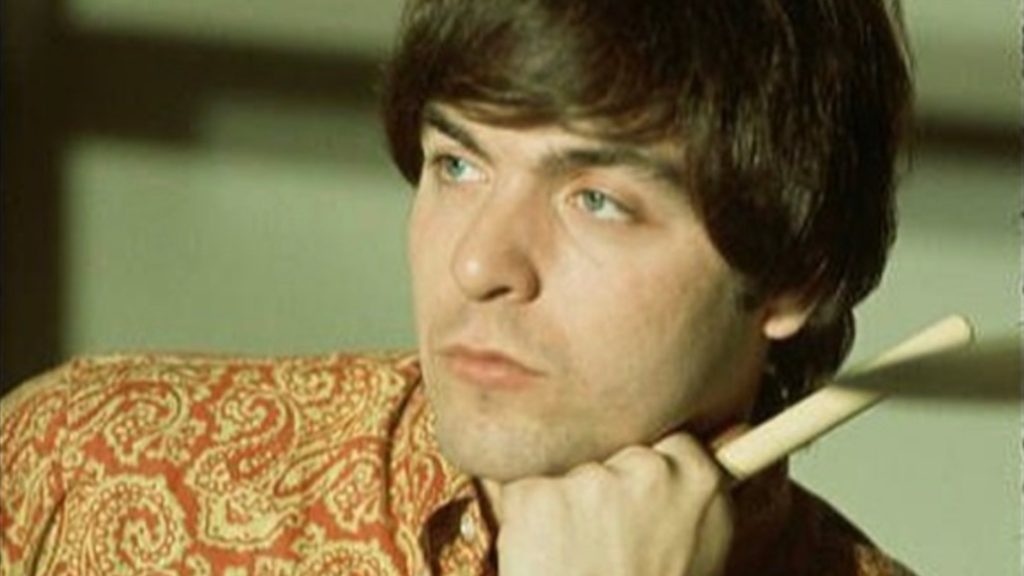
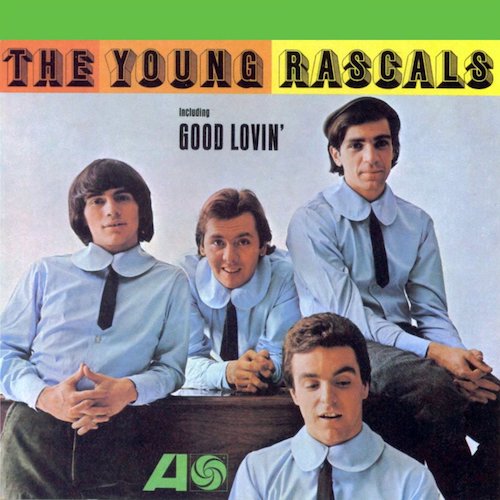

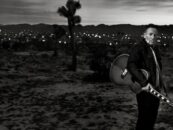

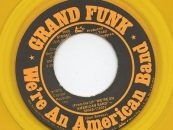

1 Comment so far
Jump into a conversationWhile it’s so heartening to read Dino’s words of brotherhood about his bandmembers at this point, apparently that feeling didn’t last long. I’ve read later interviews after they’d broken up again after this tour, and Dino pretty much breaks bad on Felix, in essence saying he wanted to control everything, and wanted more money than the rest of the band. I guess after so long you might be able to forgive, but when similar issues start popping up again, it just brings the old wounds back to fore. It was a tragedy for fans, but at least for some of us, we got that brilliant revival tour, which was unbelievably great. At least Felix and Gene continue to tour, but now, our beloved Dino is gone.